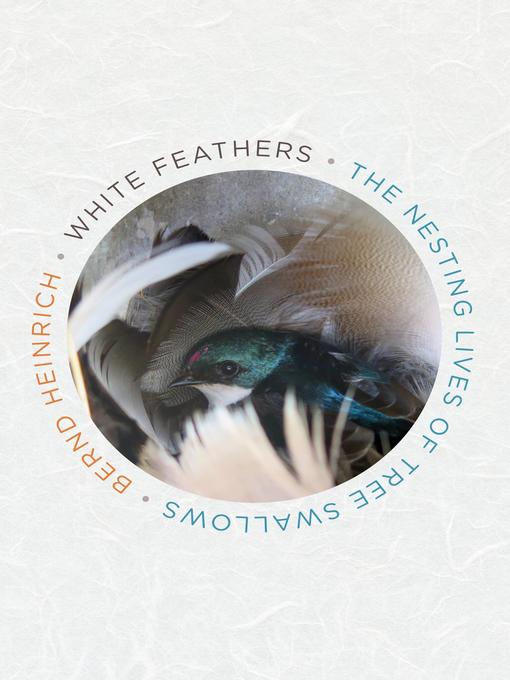
White Feathers
The Nesting Lives of Tree Swallows
کتاب های مرتبط
- اطلاعات
- نقد و بررسی
- دیدگاه کاربران
نقد و بررسی

November 25, 2019
PEN New England Award–winner and naturalist Heinrich (Life Everlasting: The Animal Way of Death) again translates his painstaking fieldwork into a fascinating narrative. Heinrich became interested in white swallows, which combine “graceful flight, beauty of feathers, pleasing songs, and accessibility,” after he discovered the nest-box he’d built near his Vermont home lined with long, white feathers by the pair of swallows nesting there. Wondering about the reasons for this behavior, and whether it was unique to that particular pair, Heinrich began watching swallow families in the area as their eggs were laid, incubated, and hatched. He meticulously recounts how he conducted an experiment in which he created new boxes for the birds to nest in very close to each other, to test their ability to coexist. After eight years of both “fascination and frustration,” he finally arrived at an answer about how the birds use feathers: as a way to communicate with each other and avoid wasteful and unnecessary conflict over habitats. However, Heinrich avoids striking too triumphal a note, cautioning that further research is still needed. Natural history lovers will relish this intimate look at a small but vital part of nature. Agent: Sandra Dijkstra, Sandra Dijkstra Literary.

November 15, 2019
A search for the answer to a seemingly trivial question--why do tree swallows line their nests with white feathers?--reveals much about the nesting behavior of these wild birds but even more about the lifestyle of a dedicated scientist. Heinrich (Emeritus, Biology/Univ. of Vermont; The Naturalist's Notebook: Tracking Changes in the Natural World Around You, 2017, etc.), a prolific author and naturalist, is no casual observer of nature. Each spring from 2010 to 2018, the now-retired professor sat quietly for hours watching tree swallows, counting, measuring, recording, and conducting experiments. He focused on a single pair of tree swallows, first in Vermont and then from his cabin in Maine. Rising sometimes before dawn, he recorded to the minute the birds' behaviors: "Finally, at 6:46 a.m., he landed on the box, peeked in, and flew back up to perch quietly on the locust tree until 7:12 a.m." Heinrich kept precise tabs on when the migrating birds returned, mated, built a nest, and laid eggs as well as when the eggs hatched, how often the chicks were fed, and when they fledged. The affinity of tree swallows for white feathers puzzled him, and he conducted experiments with feathers of various sizes and colors, even with strips of toilet paper when no feathers were available. The answer to the white feather puzzle he offers here is appealing but one that he admits needs further testing. As he writes, "eight years observing 'my' swallows' behaviors related to white feathers yielded both fascination and frustration." The author provides more information about the nesting behavior of tree swallows than most general readers will want to know, but the picture that emerges of a naturalist at work is impressive. Illustrations include eight pages of his own black-and-white close-up photographs and a scattering of delightful drawings of trees, nests, birds, feathers, and eggs. Definitely one for dyed-in-the-wool bird lovers.
COPYRIGHT(2019) Kirkus Reviews, ALL RIGHTS RESERVED.

January 1, 2020
Heinrich (Life Everlasting) expands upon his works describing the natural history of Maine. Here, he focuses on tree swallows, covering everything from their breeding behavior and nesting habitats to their relationships with other species and rival tree swallows, along with their sense of play and ecology. The engaging work is enhanced by the author's own drawings and photographs as well as a survey of scientific literature. The detailed, inviting prose contains precise dates and times, forming a diary of Heinrich's own observations, which also include thoughts on birdwatching and biology in general. Heinrich is a prolific, wide-ranging author who always finds nature compelling and makes it accessible for others. VERDICT This inviting work will draw in naturalists and birders, along with anyone wishing to learn more about animal behavior from a trusted guide.--Henry T. Armistead, formerly with Free Lib. of Philadelphia
Copyright 2020 Library Journal, LLC Used with permission.

December 1, 2019
Tree swallows are a familiar species, found across most of North America, breeding anywhere they can find cavities for their nests. Readily attracted to nest boxes and amenable to human disturbance, tree swallows are the subject of numerous scientific publications. Noted scientist Heinrich (One Wild Bird at a Time, 2016) noticed that the tree swallow pair using one of his nest boxes had lined their nest with white feathers. Such feathers are rare and hard to obtain, so why would the swallows seek them out? What follows is a lovely intimate look at the nesting cycle of tree swallows as Heinrich follows one nest over the course of a year. Experiments with providing feathers and removing them after they were incorporated into the nest lead to as many questions about feather use as answers. As Heinrich focuses on one nest, we get to know the swallow parents, watch them build their nests and feed their young, and rejoice (or grieve) at each year's outcome. Heinrich writes lyrically of the joys of field research and the way research sparks new inquiries.(Reprinted with permission of Booklist, copyright 2019, American Library Association.)

























دیدگاه کاربران